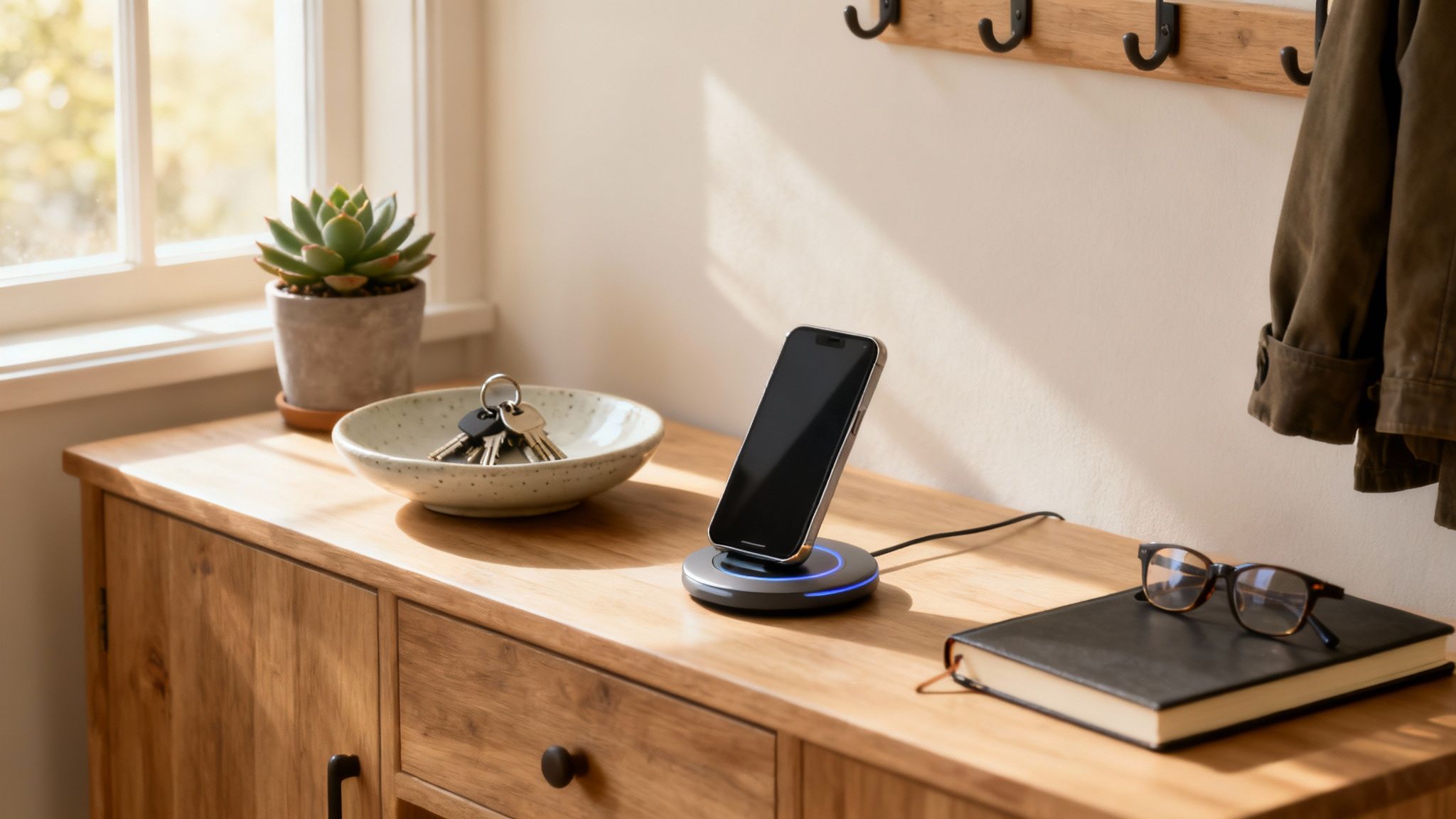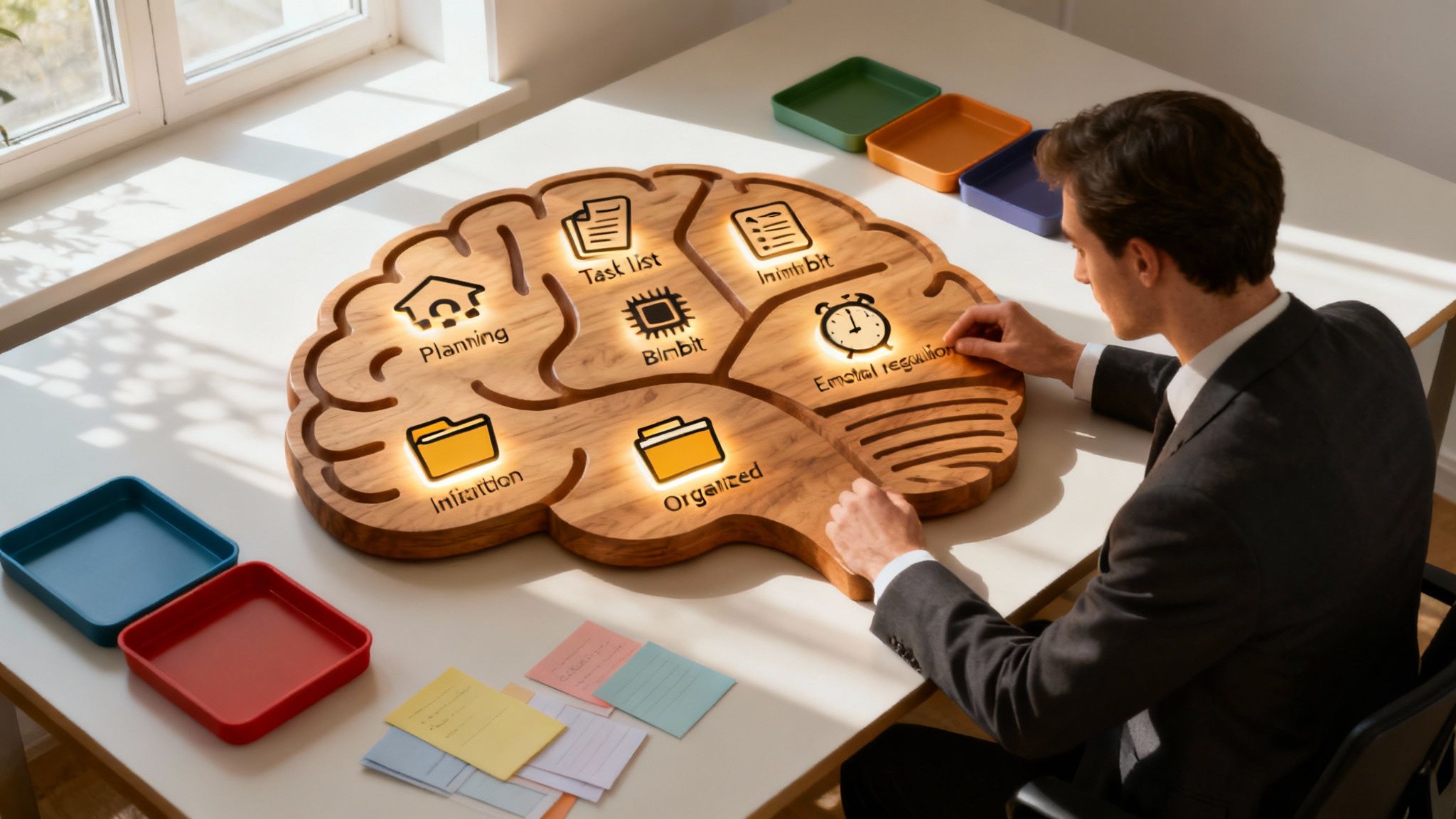Nothing has impacted my life more significantly than something ADHDers call “task paralysis” (which has also been described as task freeze, couch lock, or overwhelm). You know, when you desperately need to get started on something, but everything in you is resisting it?
It’s taken me years to figure out how to free myself from this dreaded freeze. For the longest time, I just procrastinated until the adrenaline of a deadline or an unavoidable consequence finally got me into motion. But this was a miserable cycle. The stress made me feel as though my anxiety was in the driver’s seat of my life.
If I wanted to do something, why couldn’t I just begin?
Turns out, a deficit of dopamine—the neurotransmitter associated with motivation and rewards—is the leading suspected cause for why ADHDers especially struggle with this phenomenon. If you’re a science nerd like me, this blog about ADHD overwhelm goes more in-depth about the cycle of feeling overwhelmed and shutting down.
But since you likely have ADHD, I’ll skip ahead to the part where we offer solutions.
How to cope with task paralysis and do The Thing
1. Look at the ingredients of the task and remember “RAN”
If you take nothing else from this article, let it be this acronym: RAN (like “I ran towards the task”).
It stands for Rewards, Accountability, and Novelty. These are the three crucial ingredients that will make a task more compelling for ADHDers.
Apply this method to your situation by asking yourself these questions:
- What can you add to this task to make it feel rewarding?
- Who can you call on to add a little accountability?
- What can you change or add to make it feel new, different, or interesting?
- This can apply to your environment or surroundings, how you approach the task, etc.
Here's a personal example:
To write this article, I rewarded myself with a pumpkin spice latte that I’ve been sipping while I type. (Notice that for ADHDers, having a reward after the task is complete is often unhelpful—aim for rewards you can enjoy throughout the task!)
I have my partner sitting nearby for accountability. And for novelty, I’m working in a different space than I usually do, listening to a playlist of Animal Crossing-inspired focus music. All of these things combined made the task feel much more approachable for me.
2. Give yourself permission to start small
Sometimes we freeze up in the face of a task because it feels impossible to even approach. This is why it’s so important to break up our tasks into the smallest possible pieces, making it more approachable and helping us to build momentum with tiny wins.
Instead of adding “write my essay,” to your to-do list, for example, our list of tasks will look a little different:
- Research the topic
- Pull scholarly sources
- Create potential thesis statements
- Outline the essay
- Write my introduction
…and so on. Get as small and specific as you possibly can! From there, focus on the steps that feel easiest to tackle, even if it’s just a part of a single step. The point is to get started, so don’t worry about the big picture… just take it one step at a time!
3. Investigate why you're avoiding the task
Oftentimes, we avoid a task without consciously investigating why it’s making us anxious or overwhelmed. But when we slow down, we often discover that there are specific barriers that we can address more creatively.
When you’re stuck, ask yourself these questions:
- Is there a step in the process that I’m dreading?
- If so, can I skip it, save it for later, or break it down into smaller parts?
- Is there information I’m missing?
- If so, where can I find it?
- Can I schedule time to do more research or talk to someone?
- Which parts of this task feel doable?
- Can I start there, or is this something I have to complete in a specific order?
- Are there positive feelings that will come with completing this task?
- Can I shift my focus and recall what those emotions will feel like? (Relief, excitement, pride?)
4. SMASH your task!
Another acronym to have handy is SMASH-ing a task.
S - shake it out
You’ll start by shaking it out—moving your body in some way, shape, or form. Even just wiggling your toes will do! Movement can help signal to the brain that it’s time to move out of a freeze state, and that it's time to get things done.
M - make a list
From there, you’ll make a list of the smallest possible steps to make them easier to approach.
A - acknowledge your (negative) emotions
It's not the easiest piece of advice to follow, but try to make room for any difficult emotions that may come up when you think of the specific task at hand. Simply naming our emotions can make them feel a little less daunting and a little more manageable.
S - set a timer
Set a timer for yourself, and keep it in small, manageable chunks of time, (e.g. 5 - 10 minutes) You can use your phone or a kitchen timer.
H - hurry!
Finally, try to hurry to get as much done in that small window of time as possible! By gamifying the task into a “beat the clock” challenge, we prompt an increase in dopamine levels that can help carry us through.
This strategy is a tried and true favorite of mine and has helped me through many moments of task paralysis in the past.
5. Increase your dopamine!
There are plenty of ways to boost your dopamine, which is outlined in this article about task avoidance and procrastivity.
Some of the 'easy' ones include:
- Movement (especially aerobic or joyful movement, like dancing)
- Listening to upbeat music
- Having a protein-rich snack
- Getting some sunshine (hello, vitamin D!) by taking a brief walk
You’ve got this!
However challenging task paralysis may be for you, you won’t be stuck there forever. Take a deep breath, and remember that even a small step is a step in the right direction.








